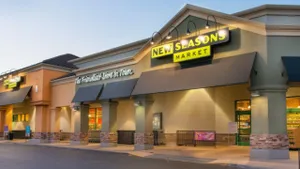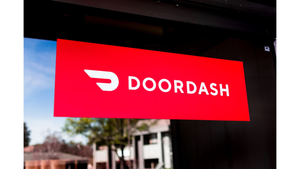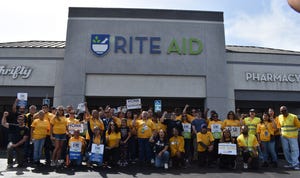ALBERTSONS STRUGGLES TO RECOVER SALES IN CALIFORNIA
BOISE, Idaho -- Albertsons here said last week it has been able to recover and retain "more of our business [in Southern California] than originally anticipated," although the residual effects of the 141-day strike-lockout there continued to have a negative impact on sales and earnings for the second quarter and first half ended July 29.Analysts contacted by SN expressed skepticism about Albertsons'
September 6, 2004
ELLIOT ZWIEBACH
BOISE, Idaho -- Albertsons here said last week it has been able to recover and retain "more of our business [in Southern California] than originally anticipated," although the residual effects of the 141-day strike-lockout there continued to have a negative impact on sales and earnings for the second quarter and first half ended July 29.
Analysts contacted by SN expressed skepticism about Albertsons' ability to win back some of the business it has lost and said further sales pressures may be imminent.
The company said second-quarter sales of $10.2 billion were reduced by approximately $182 million because of the lingering effects of the labor dispute, which ended in March; same-store sales were down 0.2% overall, and earnings fell 13 cents per share because of the company's more aggressive investment in promotions.
Speaking with financial analysts in a conference call, Larry Johnston, chairman, president and chief executive officer, said, "We continue to be very pleased with the returns on our aggressive investments [in Southern California] to get our business back.
"Total division sales for the full quarter were ahead of our internal plan, and the division retained or recaptured more business than we had originally anticipated, keeping us ahead of our plan there for both sales and profitability. We believe this recovery is directly attributable to our aggressive investments in the marketplace."
Johnston said promotional investments nationwide helped boost the chain's overall market share by 60 basis points during the quarter. However, as previously announced, investment levels will decrease during the second half of the year, he noted.
Robert Campagnino, an analyst with Prudential Equity Group, New York, said in a research note that he believes Albertsons is "playing catch-up on its price investment and may therefore lag [behind] the other retailers in a recovery."
He also said the chain's second-quarter sales trends were "a little disappointing, especially considering implied improvement in the last quarter," when the chain reported comps of 0.3% and said trends were improving. "[But] today's commentary [from company management] contained no such implication [that] management sees little change in the sluggish environment when it comes to sales trends."
Gary Giblen, senior vice president and director of research for C L King Associates, New York, also noted that Albertsons is a latecomer to investing in post-strike promotions. "For 18 months it was raising prices to make earnings look better, and then four months ago it went in the opposite direction and got more competitive. But the results would seem to indicate it's gotten almost a zero response," he said.
Giblen also said it strikes him as odd that Albertsons is claiming a turnaround in its post-strike results. "There's an obvious inconsistency in claiming a strong recovery yet attributing an earnings drop of 13 cents per share to the strike -- about double what people anticipated -- and not improving comps," he said.
With one-third of Albertsons' sales coming from drug stores and a large portion from fuel stations, overall comps should have been a lot better than 0.2% excluding the Southern California stores, Giblen indicated. "For comps to be that low, it would appear supermarkets must be running at a negative 4% or 5%," he said.
According to research report from Steve Chick, an analyst with JPMorgan, New York, "Albertsons' second quarter could have been worse, but flattish same-store sales trends, which turned negative in June and July and stayed that way in August, were discouraging. Albertsons' recent acquisition of the higher-margin Shaw's chain, as well as post-strike trends in Southern California, mask core earnings deterioration."
Chick said he estimated that core sales at Albertsons, excluding Shaw's, declined 0.3% in the quarter, compared with a 2.5% decline in the first quarter. He also estimated that sales in the chain's Southern California division are improving sequentially, from negative 25% in the first quarter to negative 10% in the second, compared with declines at Safeway of 38% in the first quarter and 7% in the second.
Although comparisons will ease in the third quarter as Albertsons begins to go up against weaker results from the onset of the strike-lockout, "same-store sales comparisons outside Southern California face uphill [challenges], while competition in the Northeast [where Shaw's operates] is likely to stiffen."
Sales rose 13.6% to $10.2 billion for the second quarter -- due primarily to the volume from Albertsons' recent acquisition of Shaw's, the company said -- and 5.6% to $18.8 billion for the half. However, the company said those gains were partially offset by the residual effect of the Southern California labor dispute, which negatively impacted sales by approximately $182 million in the quarter.
Comparable-store sales for the quarter dropped 1.3%, although excluding the stores involved in the Southern California labor dispute, the company said comps were up 0.2%. The comp-store numbers do not include results from Shaw's, which won't be reflected until the second quarter of 2005, the company said.
Net income fell 35.8% in the quarter to $104 million, or 28 cents per share. The company said earnings fell $50 million, or 13 cents per share, from the continuing impact of the labor dispute; $5 million after taxes, or 1 cent per share, from an additional contribution of $7 million to two Northern California multi-employer health and welfare plans for its share of funding deficits; and $21 million, or 6 cents per share, due to non-cash impairment writedowns associated with the chain's exits from the Omaha and New Orleans markets during the quarter. Net income for the half fell 58.1% to $140 million.
Johnston said earnings from continuing operations will be in the range of 31 cents to 35 cents per share in the third quarter and 60 cents to 65 cents per share in the fourth quarter.
In other conference call highlights:
Johnston said Albertsons got off to a good start nationwide in May, "[but] we saw some weakness in June and July."
Since the start of the third quarter, "we haven't seen a big change in the sluggishness of the retail environment," he added, "and although we've been in a little bit of a ditch in the last 60 days, we still believe we are in a broad consumer recovery, and we are pretty bullish about the future."
Albertsons has already begun introducing some of its programs at Shaw's, including its 10-items-for-$10 sections, its Steakhouse Choice line of Angus Beef line and its chicken programs, Johnston said.
Several Shaw's programs are also being introduced at Albertsons stores, including Wild Harvest natural and organic foods sections and Shop the World international food sections, "and we're seeing a sales lift that's been quite fantastic," Johnston said.
Albertsons will begin delivering products to Shaw's stores later this month from its distribution center in Lancaster, Pa., he added.
The chain is in the process of streamlining its Northern California distribution network by transferring volume from a facility in San Leandro into two other existing facilities, Johnston said.
The company ran four coordinated national promotions during the second quarter that leveraged its buying power and in-store execution, Johnston said. The promotions performed well in terms of item growth, category growth and average ticket, he said, with featured items up more than 30% over promotions in the prior year and total sales in affected categories increasing in the mid-single digits.
"Albertsons is now providing an opportunity for CPG vendors that they never had before in a company of this size," Johnston explained. "Instead of Albertsons and Jewel and Shaw's and Sav-on acting alone, now when we sit down with our CPG vendors, we've developed a national execution model that allows us to execute consistently in every store, and we also negotiate with vendors from one vantage point."
2ND-QUARTER RESULTS
Qtr Ended: 7/29/04; 7/31/03
Sales: $10.2 billion; $9 billion
Change: 13.6%
Comp-store; -1.3%
Net Income: $104 million; $162 million
Change: -35.8%
Inc/Share: 28 cents; 44 cents
26 Weeks: 2003; 2002
Sales: $18.8 billion; $17.8 billion
Change: 5.6%
Comp-store: Not Available
Net Income: $140 million; $334 million
Change: -58.1%
Inc/Share: 38 cents; 90 cents
About the Author
You May Also Like






